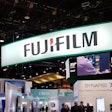“Those who cannot remember the past are condemned to repeat it.” - George Santayana
To understand the present and move forward into the future, we often need to look to the past.
 Michael J. Cannavo, aka the PACSman.
Michael J. Cannavo, aka the PACSman.
In the Financial Panic of 1873, a stock market crash in Europe precipitated a rapid sell-off of investments in American projects, particularly railroads. As railroads were a new invention of the time, new railroad lines were often built by borrowing using bonds. However, more bonds were for sale than anyone wanted and many railroads went bankrupt after companies could no longer find anyone who would lend them cash. And one of the bigger banks in New York City at the time – Jay Cooke & Company – also went bankrupt as it had invested a lot of money in the railroads.
Why the history lesson? Back in 1873 more than 25% of the 364 railroads (worth $15 billion in today’s value) crashed into bankruptcy and 18,000 businesses failed within two years. By 1876 unemployment hit 14% and was as much as 25% in New York City.
When reality hits
Now before I am called the Grim Reaper, Chicken Little (“The sky is falling, The sky is falling!!”), or Colonel Jessup from "A Few Good Men" (“You want the truth? You can’t handle the truth!”), the reason I use this as an example is to show what happens when the market gets overenthusiastic and overreacts by jumping in with two feet without even looking at the water’s depth. You also need to understand how it impacts everyone when reality hits shortly thereafter.
AI in medical imaging has over 750 algorithms cleared by the U.S. Food and Drug Administration (FDA). Even factoring in that many companies have at least three algorithms to offer, can you seriously expect all of these companies to survive? Half?
Countless small-time investors who also had put their hard-earned money into the speculative railroad bubble were wiped out. Worse, the biggest hit was taken by the free slaves who invested their life savings in Freedman’s Savings Bank and lost it all. But that isn’t the worst part.
As reported by Smithsonian Magazine, “One of the most disturbing consequences of the Panic of 1873 was the loss of trust among the many small, sometimes well-informed investors who had invested in risky Northern Pacific bonds. If Cooke and his many well-connected agents couldn’t be trusted, who could? “Their trust had been violated,” wrote Richard White, PhD, of Stanford University in a 2003 article for The Journal of American History. “Most disturbingly, [the New York Sun noted] those deceived were ‘the intelligent classes, who read newspapers, mingle in affairs and have constant access to information.’ ”
How can AI survive?
So now that you have the background, it begs the obvious question: How can AI survive?
- Mergers -- Simply put, most AI companies do not have the financial resources to go it alone. Combining with another company or two and creating a more complete offering is a consideration. Having their products offered in conjunction with modality purchases -- like what is currently being done selectively with ultrasound -- is another.
Many resist this because they think that getting rich is right around the corner. It’s not. Unless you were one of the lucky few who have been bestowed with a significant blessing from investors (that still needs to be paid back), merely surviving alone is a major achievement. Sadly, most acquisitions are often the place where great products die after a company buys them and then does nothing with the product. So I don’t recommend this option.
- NTAP was the worst thing for AI -- The New Technology Add-on Payment (NTAP) program for stroke AI software was great for the less than a handful of AI companies who met the criteria early on and actually got NTAP money. And the others? “We’re gonna get rich!” was the cry of the masses seeing those select few could make up to $1,040 per study early on (although few actually obtained anywhere near that high a reimbursement). Expectations on how much money can be made with products still abound with Transitional Coverage for Emerging Technologies (TCET) offering assistance and direction to those needing it.
- You have to show an ROI somehow -- I have been saying for nearly a decade that AI needs to either make money or save money. Several stories have recently indicated that radiologists will absorb a minimal cost hit to their payment structure to use AI, typically less than $10 per study. Most AI companies feel this is unrealistic. This leaves it up to facilities to absorb the cost of AI in the technical fee even though it is considered part of the professional component. Few have been willing to do this to date.
- Make it up in volume -- Most companies want to get rich by collecting NTAP-like reimbursements. They argue they can’t make any money collecting anything less than $50 a study, but let’s look at the gross annual volume of imaging studies being done in the U.S. alone. Using ballpark averages (since no two sources agree completely), they are as follows:
- CT procedures – 80 million
- MRI -- 40 million
- X-ray imaging – 275 million
- Ultrasound – 20 million
- Breast imaging- 40 million
- Nuclear medicine -- 13 million
With ultrasound, the actual number is higher, but you need to factor out that 25% to 50% are done for OB dating. The use of point-of-care ultrasound (POCUS) is increasing exponentially as well.
For the sake of discussion, let’s say 450 million procedures total each year can use AI. If you have 75 companies who survive and each makes $5 per procedure, that’s $30 million a year in revenue (450 companies divided by 75 who survive x $5). Private insurers may pay more, very few less. Adjust it upward even slightly and you still have more than enough for a company to survive and even thrive. Those who accepted venture capital money need to make more to pay it back with a premium, but you would hope if they used it properly that wouldn’t be an issue.
These are just U.S. numbers as well. According to the World Health Organization (WHO), an estimated 3.6 billion diagnostic examinations are performed each year globally, so no one in the AI market will go hungry.
- All or nothing? -- Many of the published studies come from countries with socialized medicine where AI use is much more widespread. While it has been said that as much as 30% of studies in the U.S. are done using AI, this is only the case if someone pays for or underwrites it. Sadly, with the possible exception of mammography, most are not paid for unless it is bundled with the professional component.
- Recognize the importance of the radiologist -- Many in AI shot themselves in the foot early on by saying AI is better than radiologists. Now that they have backtracked and agreed that AI is a complement to radiologists, the technology is becoming more accepted. But based on reimbursement alone is AI’s “opinion” worth more than a radiologist’s especially given the disparities that still exist?
A newly-minted Board-certified radiologist spends at least 12 years of education to get to where they are today -- plus years worth of experience. Should AI get more than the radiologist whose signature has to certify that an AI algorithm is correct? More to the point, is a radiologist willing to put their neck on the line for AI?
- Not all AI is equal -- There is no requirement for a minimum or maximum number of studies used in developing an AI algorithm to obtain FDA 510K clearance.
Some can have as few as 1,000 studies, while others have 100,000. Interestingly the statistical differences in accuracy based on the number of studies used to train the AI algorithm aren’t nearly as large as one would expect. This is especially true because the vast majority of AI findings are incidental and not primary. The true value of AI comes from identifying all the clinical findings to come up with a diagnosis.
- Don’t believe all you read -- There are studies after studies published about AI. All are interesting and many have relevance. Just keep in mind it’s hard to extrapolate data that relates to all radiologists when the subsets are often tiny and selective. Still, they can be of value.
An article published in the British Journal of Radiology in October 2023 promoted the diagnostic benefits of AI. The authors said that one-third of those in the U.S. -- members of the American College of Radiology, no less -- used AI and that 94% of those found it to be “inconsistent.”
Of the two-thirds who didn’t use AI, 80% deemed it to offer “no benefit” and one-third said they could not justify the cost. The study was done in 2020, yet it was published just a few months back. Almost 40% of Europeans had some experience with AI and over 50% said they didn’t want to acquire it. Nearly 96% said that AI increased or kept the workload the same. That is contrary to so many studies published recently.
Now AI has changed in the past four years, but by how much is anyone’s guess. The point here is to believe not just what you read and hear but also what you see and understand about how AI can help before you buy.
- Where AI Can Help Immediately -- AI does best when impacting workflow. That said, there are a handful of companies offering true AI-based results reporting. These systems can often show a return on investment (ROI) almost out of the box by allowing the radiologist to generate a report quicker even just when using their own words instead of adding AI findings.
Several companies have jumped on the AI reporting bandwagon in the past few months but the ones who do it the best have been in it a bit. It’s also much more than adding computer-added diagnosis (CADx) to breast imaging as was done a decade ago and then calling it Breast AI. True AI results reporting saves time. As little as 10 seconds of savings per report will show an ROI in real-time. In the end, as always, time is money.
- Using AI requires flexibility -- While an algorithm being used today might be the very best solution found, there is nothing saying what you are using now will remain at the top of the mountain in a few years. That is why interface engines that can couple and decouple the various AI offerings are so important.
Sadly the price of these engines, which interface not just AI to PACS but to numerous other clinical systems, is high making their use difficult unless it is part of a strategy for interfacing multiple clinical systems. It's all about selecting the best approach.
AI is growing at a snail's pace but is slowly becoming more accepted in mainstream imaging. We will see AI used a lot more once reimbursement from the U.S. Centers for Medicare and Medicaid Services (CMS) and private insurers becomes more of a reality. It may not be more accepted by radiologists but a few bucks in their pockets will certainly help.
Michael J. Cannavo is known industry-wide as the PACSman. After several decades as an independent PACS consultant, he worked as both a strategic accounts manager and solutions architect with two major PACS vendors. He has now made it back safely from the dark side and is sharing his observations.
His healthcare consulting services for end users include PACS optimization services, system upgrade and proposal reviews, contract reviews, and other areas. The PACSman is also working with imaging and IT vendors to develop market-focused messaging as well as sales training programs. He can be reached at [email protected] or by phone at 407-359-0191.
The comments and observations expressed are those of the author and do not necessarily reflect the opinions of AuntMinnie.com.



















